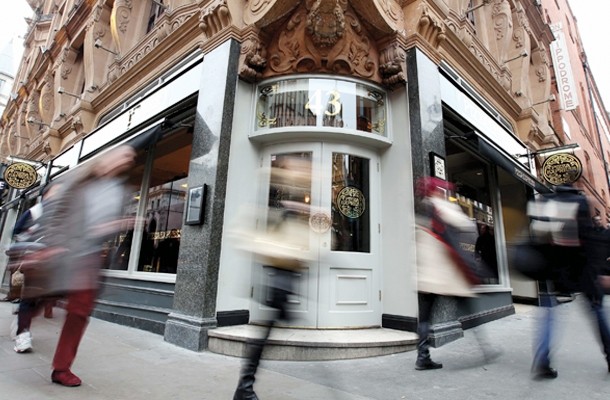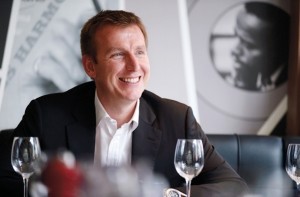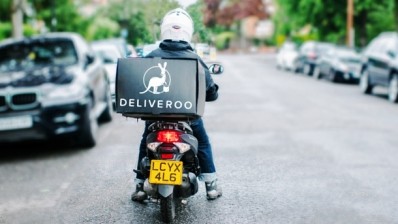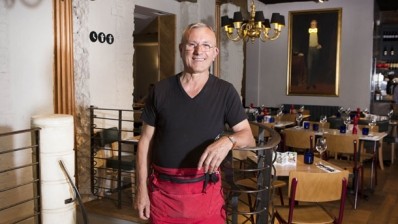Business Profile: PizzaExpress

According to Richard Hodgson, chief executive of PizzaExpress, people are not so much dismissive of PizzaExpress but forget the company is “trading ahead of the market every week and month, and has been doing so for five decades”.
Yet, with the company celebrating its 50th anniversary this year, detractors of the brand can’t argue about its longevity or the fact that it has had a huge impact on the high street during this time. “We are masters of what we do,” he says with a flourish. “There are strong analogies between us and Nando’s – we are both focused on doing one thing really well. There is a lot to be said for that.”
Hodgson, who has been chief executive of the brand since 2013, is speaking from a position of strength. The company, which was acquired last year by the Chinese private equity firm Hony Capital in a £900m deal, reported a 15.8 per cent increase in earnings before interest, taxation, depreciation and amortisation (EBITDA) to £55m for the 28 weeks ended 11 January 2015, with turnover up 9.4 per cent to £231m.
Like-for-like sales across the group, which operates 448 sites in the UK and 80 globally, meanwhile, were ahead by 6.8 per cent during the period, in which it opened 11 new restaurants in the UK, while its EBITDA margin climbed 13 percentage points to 23.8 per cent.
“Seeing as we are not one of these ‘Johnny-come-lately brands’, to be delivering this level of like-for-like sales and improving our industry leading margins is very pleasing,” says Hodgson.
“It has always been a competitive market but we just focus on what we do and make sure we do it really well.”
Keeping on its toes
Growing competition in the pizza sector hasn’t made life easy for PizzaExpress in recent years, but Hodgson is bullish about his company’s positioning. New entrants have kept it on its toes, he says, with the company regularly assessing whether an existing site needs a facelift based on whether new competition has come to the area. As a result, it has already transformed or converted 23 sites this year, with a further 28 set to be refreshed in the next six months – amounting to 10 per cent of its overall estate.
“We have got a well-invested estate, which is very important,” he says. “It is a bit like painting the Forth Bridge – when you have an estate as large as ours, you just keep going. We are very rigorous around the capital that we spend.
Historically, whoever shouted loudest got a new lick of paint, new chairs and tables. Now we treat all capital the same. In the same way we open a new site, we apply the same rigour to a transformation of that site and give a like-for-like sales figure that has to be achieved on the back of that investment. We measure that every quarter and now have a programme that really works for us.”
The brand had also become synonymous with the discounting culture during the downturn, but Hodgson says promotions across the chain are now more targeted and account for no more than 10 per cent of total sales. Spend per head has now increased, but so too has the number of covers, helped by strong demand for the brand’s thinner-crust Romana pizza range.
A grown-up future
As well as refreshing its existing estate, the company is pushing forward with a new design for future sites. Earlier this year it opened a new flagship site on London’s Charing Cross Road, which Hodgson describes as a “more grown-up” version of the brand. This involves the introduction of a more muted coloured palette and a more upmarket finish.
“A lot of our restaurants are family friendly, so one of our challenges is to make sure that mums and dads are happy to go in there without the kids,” he says. “It is recognisable as a PizzaExpress, but it’s a grown-up PizzaExpress, where people are happy to have a drink before their meal. I’m sure when Peter Boizot founded the company he didn’t expect it to be serving cocktails, but it works really well.”
In terms of overall capital, the company intends to spend £14m on 20 new openings this financial year, with a typical spend of about £700,000 per site. On top of that it is looking to refurbish about 50 sites at a typical cost of around £170,000 per site, amounting to £8.5m on refurbishment capital.
The group is also now looking very seriously at segmentation. “First and foremost we have a very successful business that is instantly recognisable by our customers and trusted by them. Where we have a number of sites close to each other in London and other major cities, one of the opportunities open to us is saying this site is family focused, but maybe with the site half a mile away we can make it slightly more grown-up.
“Charing Cross Road is the first time we have done that and it is still early days, but it definitely gives us the opportunity to think about how we can segment our restaurant estate going forward. When you have 440 restaurants in the UK and are looking to open 20 sites a year, it is inevitable that we have to segment. This is not about having different brands, but having overtly family-friendly restaurants and slightly more grown-up restaurants. In a way we do that already, for example with some of our sites in the City.”
Delivering the goods
The former Waitrose and Morrisons executive says the company is in the early stages of looking at other options for expansion and growing sales, including offering a delivery option. It has kicked off a trial in two of its London restaurants (St Bride Street and Thayer Street) where it is working with delivery companies Dinein and Deliveroo. Early results are encouraging, says Hodgson.
“In terms of delivery, we are constantly looking at that particular market. Domino’s recently published some very strong results. It is still early days but I am very excited by the amount of revenue and EBITDA that a successful delivery offer could provide.
“At this moment, if you want pizza you are forced to go with the deep-pan American-type pizza operators or alternatively a local independent. We are pleased to be able to offer the quality of a PizzaExpress pizza delivered to somebody’s home. We are excited by the market that could open up once we are happy we can do this in a way that is brand-enhancing.”
Opening a branded stand-alone delivery site is another option that the company is looking at, as well as exploring a cheaper version of the brand. “The delivery model that we are currently trialling allows us to utilise excess capacity in quiet restaurants. Most people who want pizza delivered to their home want it at the same time our restaurants are busy serving customers. There is an inevitability about doing this
through a different type of operation rather than utilising existing capacity, but it may be that it ends up as a combination of the two.”
Room for expansion
Opening 20 sites a year might sound ambitious for a company already of considerable size in the UK, but Hogdson is confident that there are 200 more sites for PizzaExpress in the UK. “It makes me smile that when Cinven acquired the business in 2006 they were led to believe then that there were a further 200 openings possible,” he points out.
“In eight years we have opened a lot of sites and what gives me real confidence is that we are opening about 20 a year, and they are all either on or ahead of our targets.
“We set our hurdle rate higher, to my knowledge, than any of our competitors in terms of the return we want from the capital we lay down. It is also because our model works in so many different types of locations. We are opening in a new leisure development at the NEC later this year, but we are also opening in relatively small towns where our competitors’ models don’t allow them to contemplate opening there. That is the beauty of PizzaExpress.”
The company also has bold plans overseas, with expansion in China its main aim. It is about to open three more restaurants in Beijing, all of which will be company-owned, following on from the success of a debut site that launched in the country last autumn. It also has a franchise offer in Shanghai and Hong Kong, the latter it hopes to acquire at the earliest opportunity.
“There is potential to open another 10 to 15 each year during the next five years in the region,” says Hodgson. “Pizza Hut did 10 sites a year in the first 10 years, then in the next decade they did 1,000.” Now there is a target to deliver on.
















